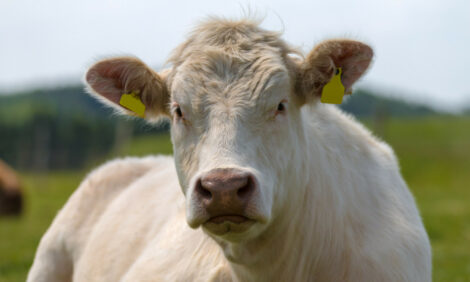



USDA Researchers Evaluate Prion-Free Cattle
US - The U.S. Department of Agriculture's Agricultural Research Service (ARS) announced today that initial results of a research project involving prion-free cattle are now available online at www.nature.com/nbt/.
ARS scientists evaluated cattle that have been genetically modified so they do not produce prions, and determined that there were no observable adverse effects on the animals' health.
"These cattle can help in the exploration and improved understanding of how prions function and cause disease, especially with relation to bovine spongiform encephalopathy, or BSE," said Edward B. Knipling, administrator of ARS. "In particular, cattle lacking the gene that produces prions can help scientists test the resistance to prion propagation, not only in the laboratory, but in live animals as well."
Prions are proteins that are naturally produced in animals. An abnormal form of prion is believed to cause devastating illnesses called transmissible spongiform encephalopathies (TSEs), the best known of which is BSE.
ARS studied eight Holstein males that were developed by Hematech Inc., a pharmaceutical research company based in Sioux Falls, S.D. The evaluation of the prion-free cattle was led by veterinary medical officer Juergen Richt of ARS' National Animal Disease Center (NADC) in Ames, Iowa. The evaluation revealed no apparent developmental abnormalities in the prion-free cattle.
Richt said, "The cattle were monitored for growth and general health status from birth up to 19 months of age. Mean birth and daily gain were both within the normal range for Holsteins. General physical examinations, done at monthly intervals by licensed veterinarians, revealed no unusual health problems."
ARS, with assistance from researchers at Hematech and the University of Texas, evaluated the cattle using careful observation, post-mortem examination of two of the animals, and a technology that amplifies abnormal proteins to make them easier to detect. Further testing will take at least three years to complete.
TheCattleSite News Desk


